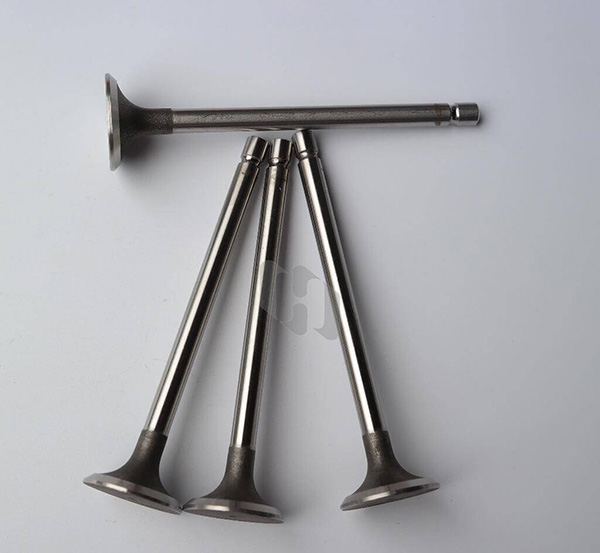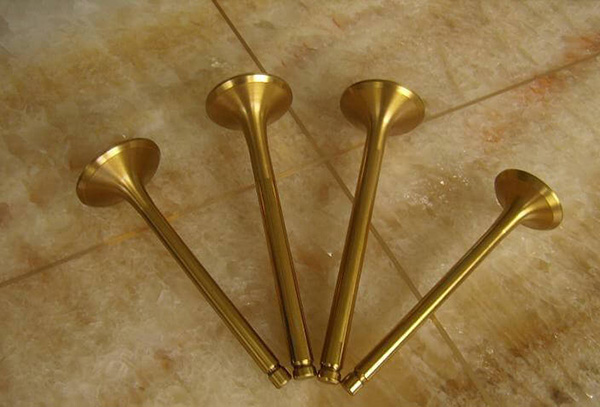© 2019 Suzhou Tianzhijiao Precision Machinery Co.,Ltd. All rights reserved. Site Map Designed by iwonder.cn
Engine Valve Motion
The motion of the engine valves is driven by the camshaft of the engine, which contains a series of lobes or cams that serve to create linear motion of the valve from the rotation of the camshaft. The number of cam lobes on the camshaft is equal to the number of valves in the engine. When the camshaft is in the cylinder head, the engine is called an overhead cam (OHC) design; when the camshaft is in the engine block, the engine is called an overhead valve (OHV) design.
Regardless of the engine design, the basic movement of the engine valves occurs by the cam riding against a lifter or a tappet that provides a force that presses against the valve stem and compresses the valve spring, thereby removing the spring tension that keeps the valve in the closed position.
This movement of the valve stem lifts the valve off the seat in the cylinder head and opens the valve. Once the camshaft rotates further and the cam lobe moves so that the eccentric portion is no longer directly in contact with the lifter or tappet, the spring pressure closes the valve as the valve stem rides on the centric portion of the cam lobe.

Maintaining the proper valve clearance between the valve stem and the rocker arm or cam is extremely important for the proper operation of the valves. Some minimal clearance is needed to allow for the expansion of metal parts as the engine temperature rises during operation.
Specific clearance values vary from engine to engine, and failure to maintain proper clearance can have serious consequences to engine operation and performance. If the valve clearance is too large, then the valves will open later than optimally and will close sooner, which can reduce engine performance and increase engine noise. If the valve clearance is too small, valves will not close fully, which can result in a loss of compression. Hydraulic valve lifters are self-compensating and can eliminate the need for valve clearance adjustments.
Modern combustion engines can use a different number of valves per cylinder depending on the design and the application. Smaller engines such as those used in lawnmowers may have only a single intake valve and one exhaust valve. Larger vehicle engines such as 4-, 6- or 8-cylinder engines may use four valves per cylinder or sometimes five.
Engine Valve Materials
Engine valves are one of the components in internal combustion engines that are highly stressed. The need for reliable engine operation dictates that engine valves be capable of exhibiting resistance to repeated and continuous exposure to high temperature, high pressure from the combustion chamber, and mechanical loads and stresses from the engine dynamics.
The intake valves on internal combustion engines are subjected to less thermal stress because of the cooling effects of the incoming air/fuel mixture that passes by the valve during the intake cycle. Exhaust valves, by contrast, are exposed to higher levels of thermal stress by being in the pathway of the exhaust gases during the exhaust cycle of the engine. In addition, the fact that the exhaust valve is open during the exhaust cycle and not in contact with the cylinder head means the smaller thermal mass of the combustion face and valve head has a greater potential for a rapid temperature change.

Intake valves, because of their lower operating temperatures, are typically made of materials such as chrome, nickel, or tungsten steel. The higher temperature exhaust valves may use more heat resistant metals such as nichrome, silicon‑chromium, or cobalt-chromium alloys.
Valve faces that are exposed to higher temperatures are sometimes made more durable by the welding of Stellite, which is an alloy of cobalt and chromium, to the valve face. Other types of material used for the fabrication of engine valves include stainless steel, titanium, and tribaloy alloys.
In addition, coatings and surface finishes can be applied to improve the mechanical properties and wear characteristics of the engine valves. Examples of this include chromium plating, phosphate plating, nitride coating, and swirl finishing.
By continuing to use the site you agree to our privacy policy Terms and Conditions.